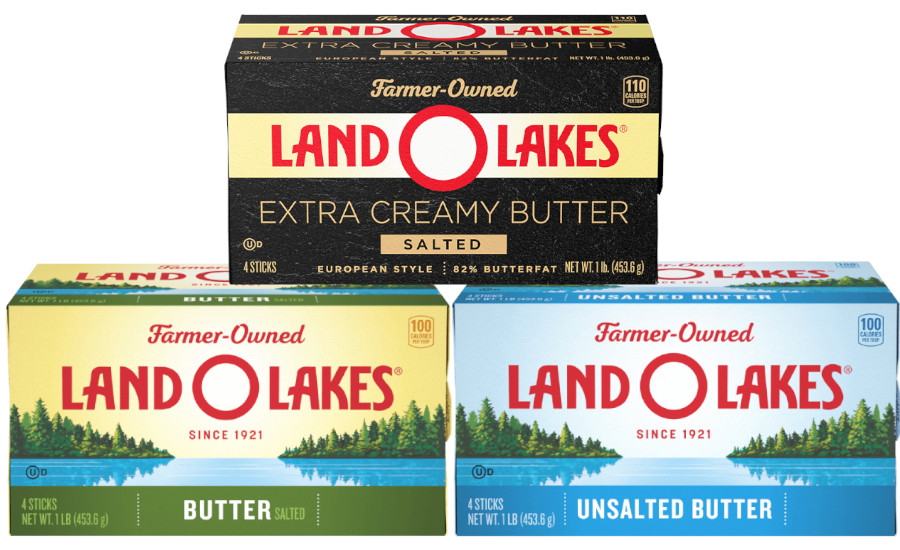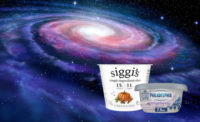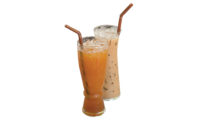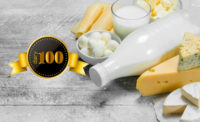Released in 1969 by The 5th Dimension, the Grammy award-winning “Aquarius/Let the Sun Shine in, popularized in the Broadway musical “Hair,” was based on the astrological belief that the world was entering “the Age of Aquarius,” with love, light, and humanity the guidepost for life. The lyrics proclaimed: “When the moon is in the Seventh House, and Jupiter aligns with Mars, then peace will guide the planets, and love will steer the stars, this is the dawning of the age of Aquarius, age of Aquarius, Aquarius, Aquarius.”
Looking at refrigerated butter, the “Age of Aquarius” has arrived as the subcategory went from losing 8.6% in U.S. multi-outlet dollar sales through Sept. 5, 2021, to “skyrockets in flight,” with a 7.9% increase and dollar sales of $3.34 billion for the 52 weeks ending Sept. 4, according to data from Chicago-based Information Resources Inc. (IRI). Yet, interestingly, even though dollar sales for six top-10 refrigerated (RFG) butter brands plunged last year and the overall subcategory declined percentage-wise, the subcategory claimed larger sales of $3.7 billion last year compared with this year’s sales of $3.34 billion, IRI data reveals.
Unit-wise, RFG butter was down 5.4% to 833 million units; however, the price per unit was up $14 cents to $4.01 per stick, IRI reports.
Albeit from a smaller base, Chef Shamy, at No. 8, is new to the Top 10 list of RFG butter with dollar sales of nearly $26 million and a 4.7% year-over-year (YoY) increase.

Founded in 2007, the Salt Lake City-based company announced plans in June to rebrand its flavor-packed craft butters under the name Better Butter. Part of the rebrand includes marketing plans to communicate that the all-natural butters are designed to make everything taste more amazing, says Chef David Shamy, who got his start in the butter business from his home kitchen by making homemade garlic butter for friends and family.
Now, 15 years later, flavors for the gluten-free, kosher and halal gourmet, spreadable butters include everything from savory Asiago Chive, Garlic Butter with Parmesan & Basil, Steakhouse and Lemon Dill Saute Butter to sweet flavors like Cinnamon Brown Sugar Honey, Blueberry Honey, Strawberry, and Vanilla. The company says it prides itself on making high-quality, delicious butter that is free of extra preservatives or chemical add-ins, like rbSTs (growth hormones) and MSGs.
Bring on the butter
Though other dairy products have had their ups and downs (mostly up), for the past decade, butter and cheese have been “old reliables,” with neither seeing consumption declines over the past decade, according to the National Milk Producers Federation, Arlington, Va.
Noting that the dairy industry is in constant evolution, from advances in science to innovations in sustainability, the “bring on the butter” refrain continues to resonate. In fact, between 2011-2021, a chart from the USDA reveals that the number of pounds of butter consumed per person continued to grow, with 1.6 pounds consumed in 2011, 1.7 pounds consumed in 2016 to just north of 2 pounds in 2021.
When it comes to sales of RFG butter in conventional and natural enhanced markets for the 52 weeks ending Sept. 4, Chicago-based SPINS LLC reports $3.78 billion in dollar sales, a 6.7% increase over last year’s $3.54 billion.
Dan Buckstaff, SPINS’ chief of marketing, notes that RFG margarine and plant-based spreads saw 11% dollar growth to $1.46 billion vs. year-ago sales of $1.31 billion.

“Plant-based categories are seeing more competition than typical dairy products as more brands emerge and there is competition for achieving the closest flavor and texture to traditional dairy,” he says.
Buckstaff points out strong subcategories with a clean-label, reduced sugar mantra are RFG yogurt, $1.68 billion, up 15.4%; RFG cream cheese and other cheese spreads, $1.97 billion, up 8%; and RFG sour cream, $1.09 billion, up 7.2%.
IRI’s John Crawford, vice president of client insights, dairy, notes that butter/butter blends are No. 7 are the Dairy15 list while margarine/spreads rest at No. 13. Ranked in size from largest to smallest, the Dairy15 are Milk, Natural Cheese, Yogurt, Ice Cream/Sherbet, Fz Novelties, Cream/Creamer, Butter/Butter Blends, Processed Cheese, Cream Cheese, Rfg Dips, Rfg Whipped Toppings, Sour Cream, Margarine/Spreads, Cottage Cheese, Rfg Desserts.
Based on percentage of change, the top growing categories through Sept. 4 are margarine/spreads, with 11.1% growth ($1.45 billion in dollar sales); RFG dips, with 10.9% growth ($1.57 billion in dollar sales) and FZ novelties, a 9.4% increase ($7.53 billion in dollar sales).
Within the Dairy15 list of top brands, Land O’Lakes, at No 9, notched sales of $753 million, a 5% YoY gain. The top-growing brands in Dairy15 comprised Country Crock, No. 5, in margarine/spreads, and Kerrygold, No. 15, in RFG butter, Crawford states.
With U.S. multi-outlet sales of $1.6 billion and a double-digit increase of 13.4%, private label was the top driver in the RFG butter subcategory. See the chart for other top brands.
When it comes to the $3.72 billion butter/butter blends category (7% growth), the RFG butter blends subcategory saw a slight 0.9% decline and overall sales of $382 million, IRI research found. The Top 5 RFG butter blend brands are Land O’ Lakes, $311 million (-3.6%); Challenge, $24 million (-4.8%); private label, nearly $22 million (1.4%); Kerrygold, $14 million (137.3%); and Sea Gold, nearly $3 million (7.3%).
On the unit side, the cost of butter blends rose $4 cents to an average of $4.18. Unit sales declined 4.4% with 91.5 million units.
Ready for liftoff
In U.S. multi-outlets for the 52 weeks ending Sept. 4, margarine/spreads are lifting off to a higher stratosphere, with an 11.1% YoY gain and $1.45 billion in dollar sales, IRI data states. Unit sales, however, declined 6.5% to more than 486 million units.
“The margarine/spreads resurgence is driven by inflation and need for consumers to find lower-cost alternatives,” IRI’s Crawford explains.
Based on IRI data, the Top 5 margarines/spreads are Shedds, with 21.9% YoY growth, and $516 million in basket rings; I Can’t Believe It’s Not Butter, with $294 million in dollar sales and 9.6% growth; Imperial, with 23% YoY growth, and $129 million in sales, an amount that slightly edged out Blue Bonnet which generated $128 million in dollar sales (1.1% growth); and Smart Balance, with $106 million and a slight 0.2% YoY deceleration.

As consumers seek easier ways to add fast flavor to meals and snacks with fresh ingredients, Challenge Butter, a U.S. farmer-owned butter brand headquartered in Dublin, Calif., continues to innovate in the butter space with the June launch of Challenge Butter Snack Spreads. Made with real butter and no artificial flavors, the sweet and savory spreads are available in dessert and seasoned varieties for one’s topping, dipping, spreading, slathering, and sauteing pleasure.
Offered in Vanilla Fudge, Chocolate, and Salted Caramel, the dessert varieties can be used on everything from graham crackers, pretzels, and waffles to crepes, strawberries, pancakes, and apples. The seasoned varieties, available in Buffalo, Everything and Garlic Parmesan and Herb, are designed to bring a bold flavor and spicy kick to pita chips, chicken wings, pasta, meats, bread, and chips, the company says.
"The Challenge Snack Spread line adds a new, flavorful twist to our beloved, freshly churned butter, making it possible for anyone to enhance their favorite snacks and meals quickly and easily," says Michael Burdeny, president of Challenge Dairy Products Inc. "Even after 110 years, Challenge continues to push itself to bring fresh innovation to the category, responding to consumers' growing interest in snacks and seeking ways to further enhance those eating occasions."
Founded in 1911, Challenge Butter, a wholly owned subsidiary of California Dairies Inc., is churned fresh daily from pure sweet cream by family dairy farmers who are leaders in sustainable farming and animal welfare practices. In addition to the new line of sweet and savory snack spreads, Challenge Butter’s portfolio includes traditional butter, spreadable butter, European-style butter, and cream cheese.
With the holidays close at hand, at-home bakers will be dusting off their cookie recipes and baking up a storm using fresh softened butter in chocolate chip cookies, sugar cookies, and more. For those who don’t have the time or inclination to bake, there are an emerging number of bakeries and confectioneries who are using cocoa butter, or cacao butter, in their recipes, states a new report from Noida, India-based UnivDatos Market Insights. Valued at more than $2.3 million in 2020, the cocoa butter market is expected to grow at a compound annual growth rate (CAGR) of around 8% from 2021-2027.
The market research firm explains that despite the word “butter” in its name, cocoa butter is vegan and contains no dairy products.
In another galaxy
Speaking of vegan, the vegan butter market is in another galaxy. It is expected to top $2.7 billion and is projected to grow at a CAGR of 5.7% between 2022 and 2032, surpassing $4.8 billion by 2032, according to Future Market Insights in its “Vegan Butter Market Outlook (2022-2032)” report.
The report states that the growing trend of veganism is pushing the need for vegan alternatives, such as vegan or plant-based butter, within the dairy industry. Globally, vegan butter demand is projected to grow 5.5% in 2022.
As plant-based alternative sources and higher quality ingredients offer better quality, preference for vegan butter is increasing. As per the study, vegan butter is steadily carving out as a niche segment in the plant-based industry, which is projected to show lucrative growth opportunities in the upcoming period.
“Traditional butter alternatives have come a long way with the low grade contained partially hydrogenated oils over the past decade. While the demand for artificial colors and flavors increased with dairy-based products,” the report states. “However, health-conscious people today are encouraging the industry players to re-shape the face of food and beverage industry. Growing preference for a healthy outlook with vegan alternatives like vegan butter, cheese, and spreads will boost the market.”




